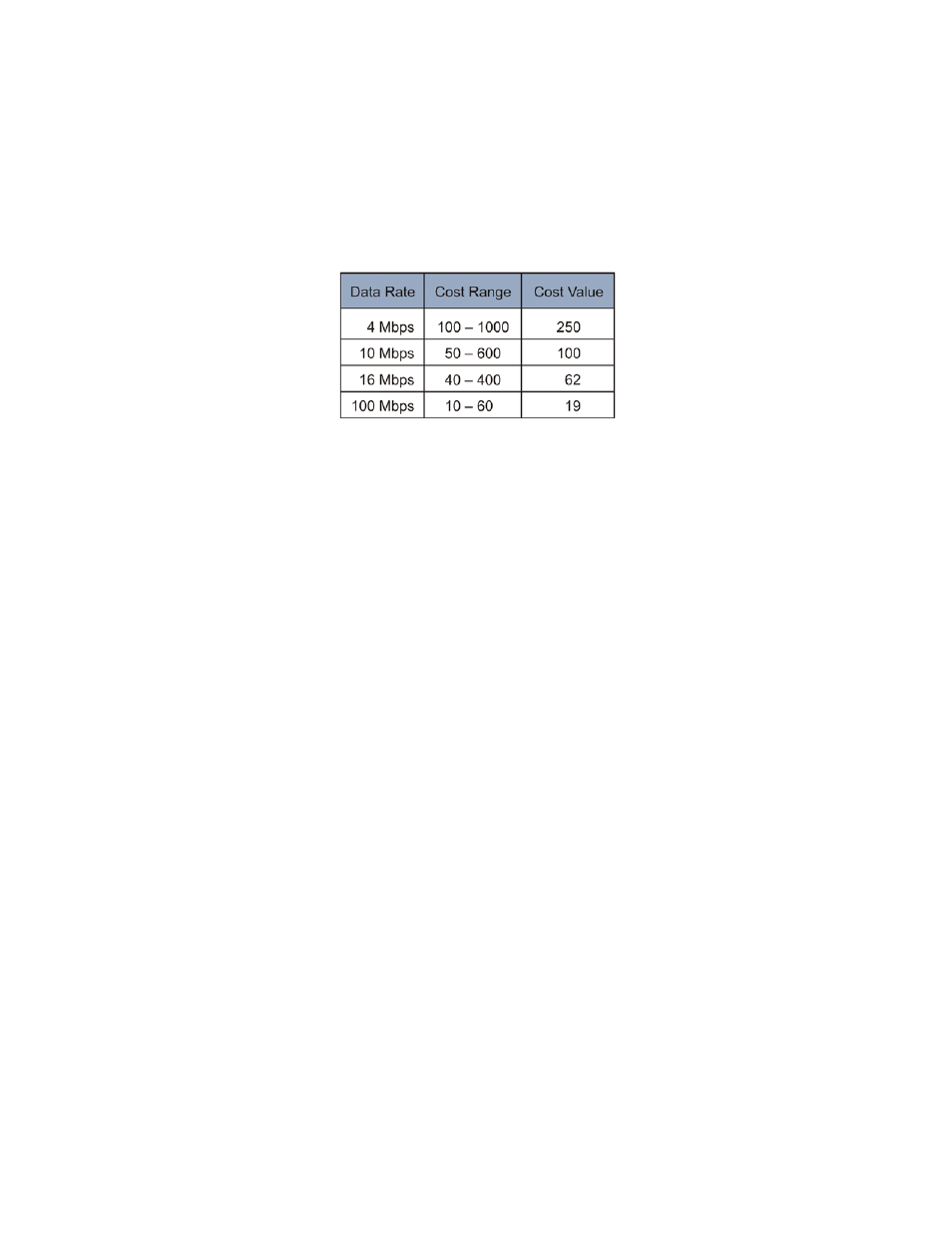2 path cost, 3 priority (of individual ports), 4 admin edge – Contemporary Control Systems Compact Managed Switches Software Manual for Console Access User Manual
Page 41: On 4.2.1.9.2.6.1), On 4.2.1.9.2.6.2), On 4.2.1.9.2.6.3)

TD020850-0MG
41
4.3.9.2.5.2 Path Cost
In determining the most efficient path for conveying messages between the periphery of the
tree and its root, one of the factors RSTP relies on is “path costs”. A typical link operates at
either 10 or 100 Mbps and a port sending traffic to that link is assigned a “cost” derived from
the link data rate. The default for the
Path Cost field is 19 (the nominal RSTP port cost for
a 100 Mbps link). Nominal values of port path costs and the suggested ranges through
which these values might vary in most networks are listed in Table 1.
Table 1 — Port Path Costs
Path Cost settings in Figure 32 can be set from 1–65535. When should you set a port
path cost to a very high value? Although the associated link might operate at 10 Mbps, for
example, the non-RSTP end of the link might have a very slow device such as a dial-up
modem that could slow traffic drastically. In such a situation, you would likely want to raise
this port path cost value to force RSTP to only use this path as a last resort.
4.3.9.2.5.3 Priority (of individual ports)
With the
Priority field, you can modify the priorities of individual ports to affect RSTP path
choices in the local vicinity of the switch. A lower value means a higher priority. Priority
settings differ from path costs which are cumulative in calculating a total path from
periphery to root. The
Priority value only acts locally so you can force RSTP to favour a
certain path emerging from the switch in question when two paths from the switch are
otherwise equal. This field’s default value is 128 and its value can be toggled in 16 steps
from 0–240 where each increment has a value of 16.
4.3.9.2.5.4 Admin Edge
This option (set to FALSE by default) can be set TRUE if the attached device falls outside
the RSTP tree. Such a device could be an operator work station or a server. In this case,
the port affected by the
Admin Edge would be at the edge of RSTP administration. End
nodes cannot cause loops, so they can pass directly into the Forwarding state. Setting this
value to TRUE provides several benefits
:
•
gives faster RSTP algorithm solution (convergence)
•
reduces flooding needed for rebuilding address tables during reconfiguration
•
eliminates an RSTP reconfiguration if the port changes state
•
improves other RSTP-related timeout issues
